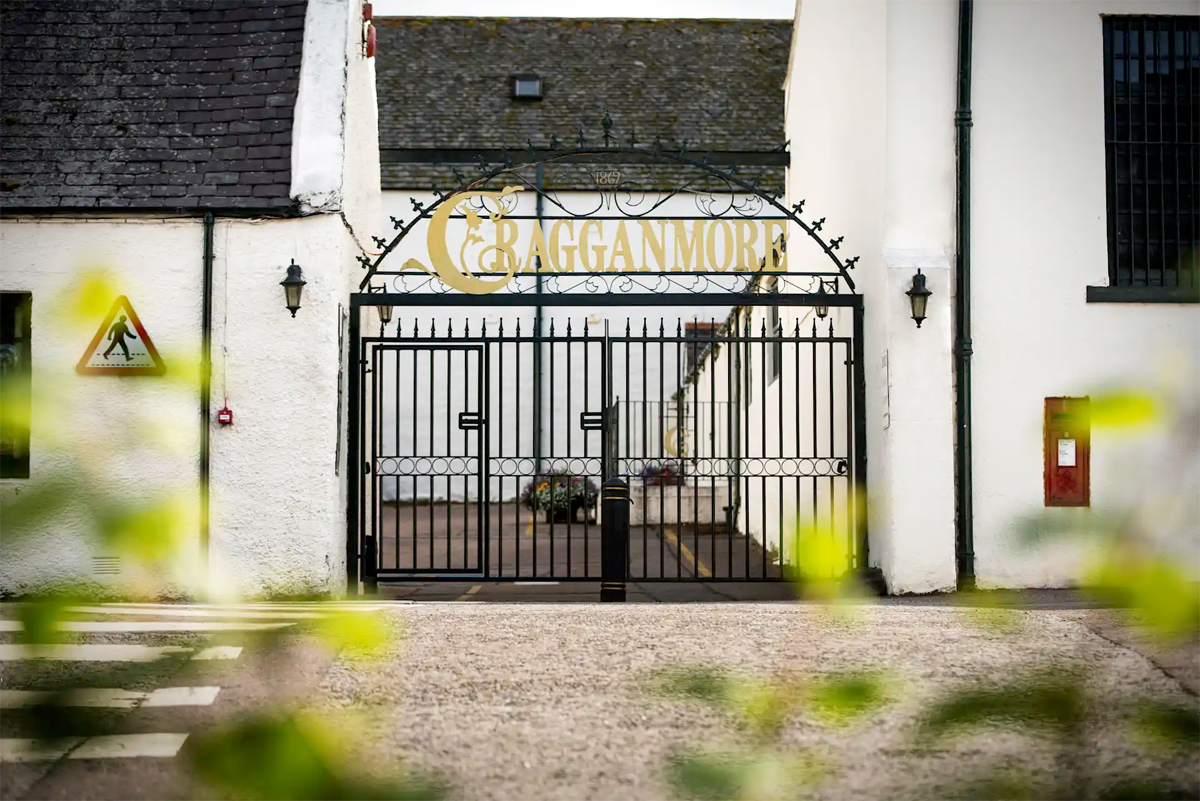Cragganmore’s story
Cragganmore is a single malt distillery in the Speyside region of Scotland. It is located close to the village of Ballindalloch. It is owned by Diageo and is one of their smaller distilleries. However, it plays an important role in their wide range of blended Scotch whiskies, such as White Horse, Old Parr and Johnnie Walker. However, Cragganmore is best known for being home to one of the six Diageo Classic Malts, in which it represents Speyside. The other regional representatives are Dalwhinnie (Central Highlands), Glenkinchie (Lowlands), Lagavulin (Islay), Oban (West Highlands) and Talisker (Islands).
Cragganmore means ‘big rock’ and comes from the Scottish Gaelic ‘creagan mór’. The name refers to the local “Craggan Mor” hill, which sits close to the distillery. Cragganmore’s greenstone building materials were quarried from the hill. The water for production is taken from the Craggan Burn, which runs alongside the distillery. Cragganmore is known for its heavy and complex Speyside style. This sturdy, robust single malt adds considerable structure to blended whiskies. They also occasionally use lightly peated malt to produce a mildly smoky spirit.
Cragganmore’s history
Cragganmore was founded in 1869 by John Smith. He had worked at the nearby Glenfarclas and Macallan, but saw an opportunity to start his own distillery. The location was chosen due to its proximity to the Strathspey railway line. This began operating in 1863 and ran through Speyside between Dufftown and Aviemore. It was commonly known as ‘The Whisky Line’.
His son George Smith took over upon his death in 1886. It later passed ownership to his son, Gordon Smith, in 1893. Gordon oversaw a major modernisation in the early 1900s, which was designed by renowned Victorian distillery architect Charles Doig. When Gordon Smith died in 1912, his widow Mary Jane Smith took over. However, the onset of World War I saw the distillery (alongside many others in Scotland) struggle and production ceased for a year in 1917.
Just five years after reopening, Cragganmore was sold to the newly formed Cragganmore-Glenlivet Distillery Co. This was co-owned by Mackie & Co. – the producers and owners of the blend White Horse – and Sir George Macpherson-Grant of the Ballindalloch Estate. This became part of the much larger Distillers Company Ltd. (DCL) in 1927. The current owners are Diageo, who part-evolved from DCL via United Distillers (UD). UD were the first to introduce the Classic Malts concept in 1988 to show different regional styles. Cragganmore 12 Years Old was an original in the line-up and represented Speyside. It remains an ever present today.
- How to pronounce Cragganmore? crag-an-moor
- Country: Scotland
- Region: Speyside
- Founded: 1869
- Current owners: Diageo
- Production capacity per year: 2.2 million litres
- Mash tun: 7 tonnes
- Washbacks: 6
- Stills: 4
- Visitor centre: Yes
Cragganmore Distillery
Ballindalloch
Moray
AB37 9AB
tel – +44(0)1479 874700
www.malts.com
Did you know?
Unusually, Cragganmore runs six short fermentations and six longer fermentations per week. They are 50 and 100 hours respectively. This produces a heavy malty wash and a light fruitier one. These are combined prior to distillation. It is also one of the few distilleries in Scotland to still have traditional wormtub condensers.
Cragganmore





